Organic traffic is the lifeblood of any online business. It’s the fuel that propels coveted conversions and drives business income.
But what happens when you can’t accurately measure the true potential of organic traffic? You would miss out on the opportunity to effectively analyze your competitors’ traffic and identify crucial keywords for the sustainable growth of your business.
This is a scenario that no business owner or marketer ever wants to face.
SE Ranking’s updated formula for estimating organic traffic solves this problem. We’ll begin rolling out our promising AI-powered algorithm this month, designed to provide you with even more precise data on the search volume and organic clicks that any website can generate. Speaking numbers, our new organic traffic estimation is now 29% more accurate than it was before and closer to the values collected by Google Search Console.
In this article, we’ll explain how this algorithm works and explore the many ways you can benefit from this update.
What is organic traffic estimation?
In SE Ranking, organic traffic refers to the number of clicks a website receives through organic search results within a set period of time. While it is an estimated amount, our new approach ensures that the data you get is more precise than it used to be.
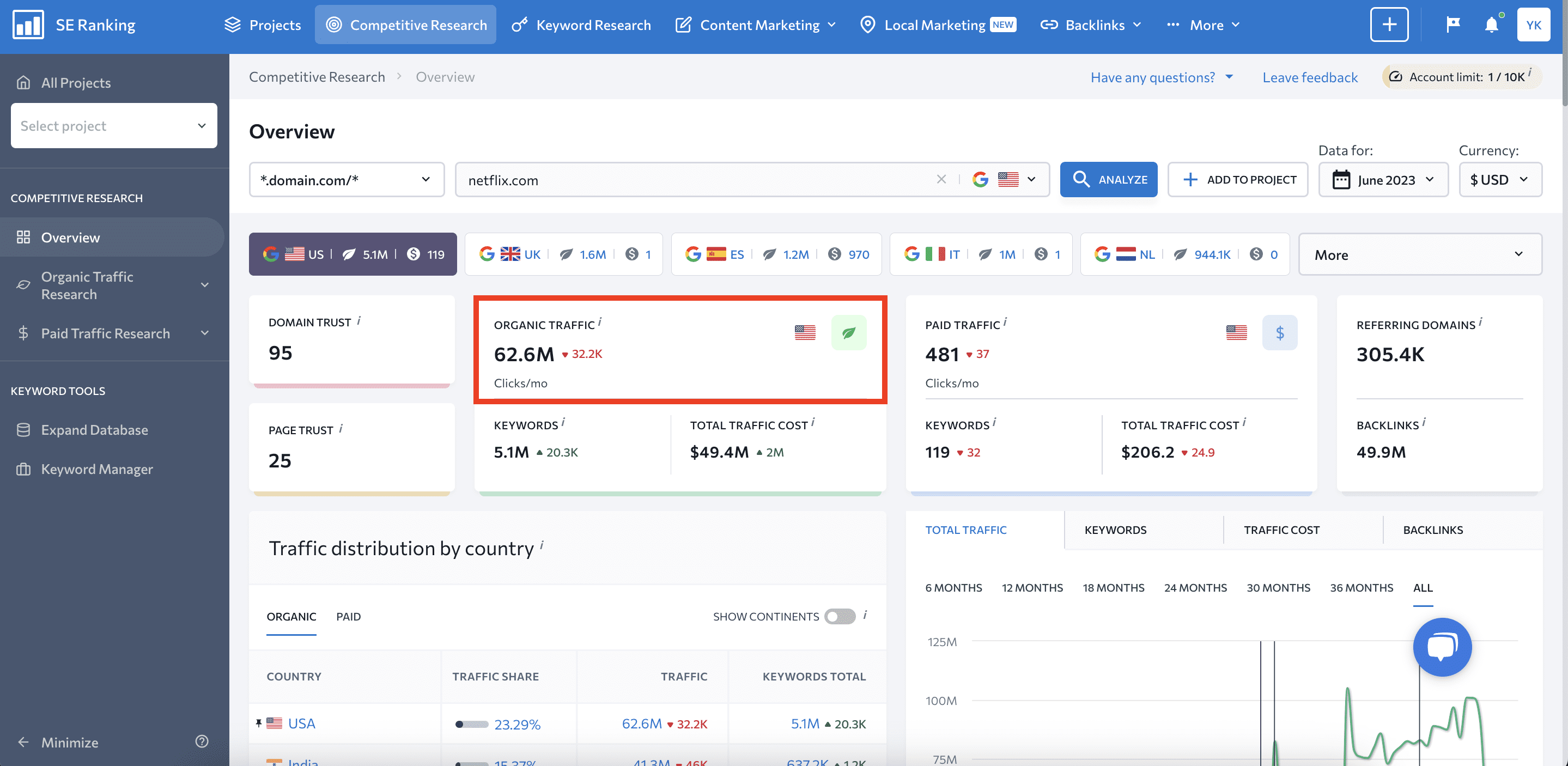
Having more precise organic traffic information allows you to more accurately gauge the effectiveness of your SEO strategies. It enables you to identify areas for improvement, allocate budgets, and make informed decisions.
How SE Ranking calculates organic traffic: before and now
SE Ranking has taken organic traffic estimation to new heights with its new-and-improved, advanced formula. This formula is designed to provide accurate and comprehensive insights into any website’s potential search traffic.
Earlier methods focused namely on analyzing keyword rankings, monthly search volume, and CTR. But we went the extra mile when upgrading SE Ranking’s traffic forecasting procedures.
Improved the search volume calculation process
This is one of the most critical components for calculating possible organic traffic. By factoring in accurate search volumes for each keyword, you’ll get a more realistic traffic potential estimation.
Once we’ve tweaked our algorithm for calculating search volume and added such factors as seasonality and keyword popularity, the ungrouping process has become more precise. You can see this in the screenshots below.
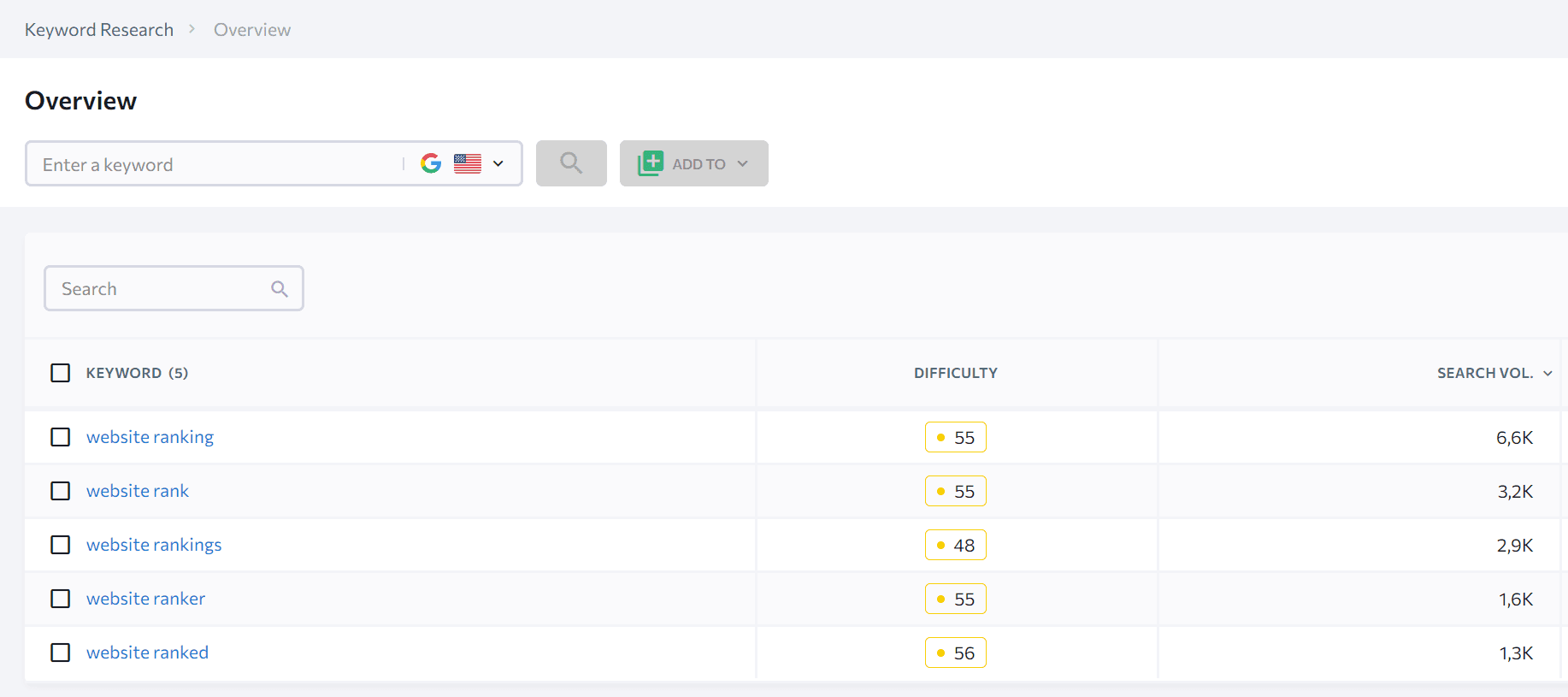
All of the tested keywords have different search volume values. For comparison, Google Keyword Planner shows you all these same keywords grouped into one cluster and with an average search volume range for the cluster, and not for each individual keyword.
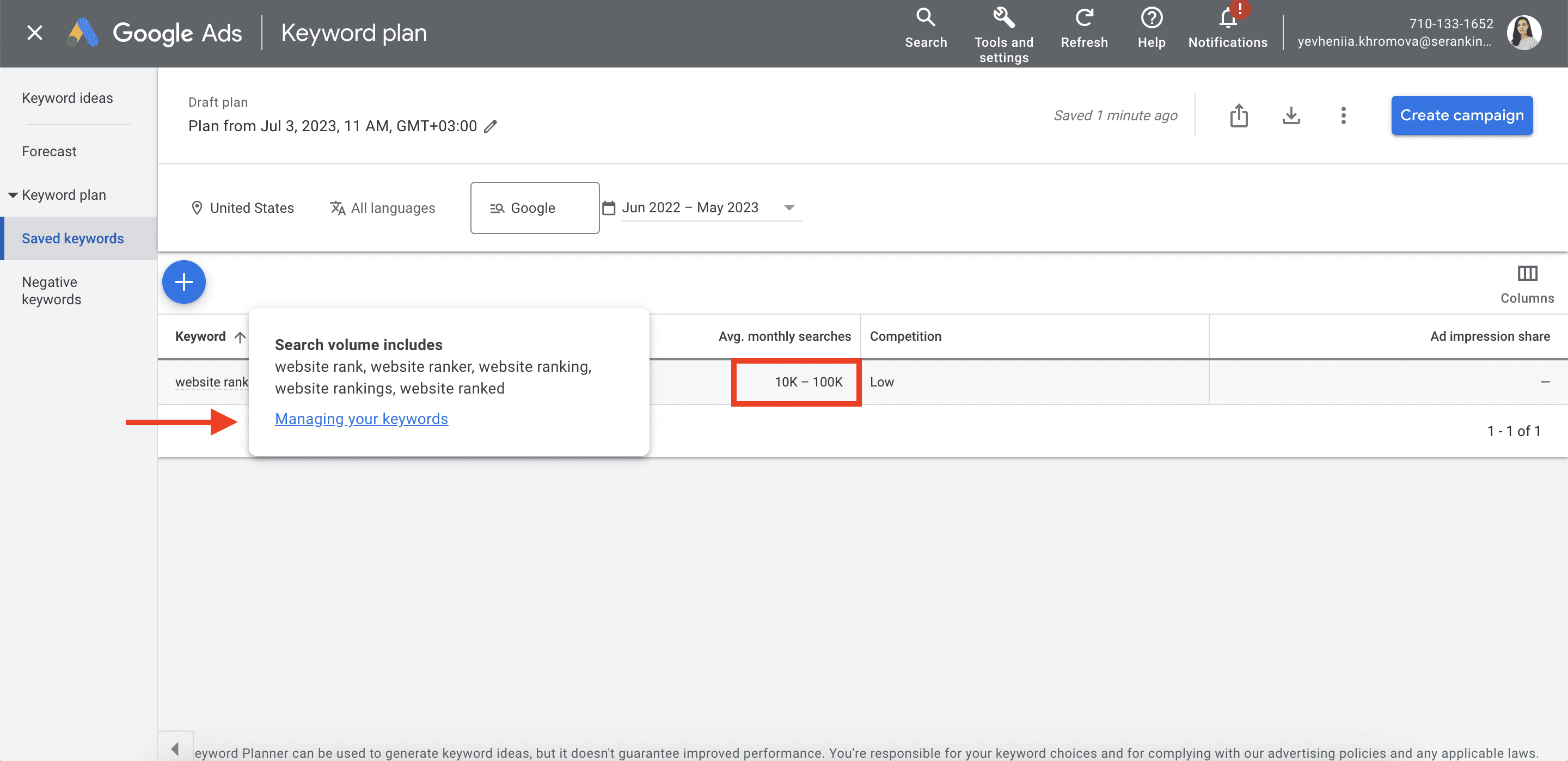
With grouped keywords and search volume ranges, it’s challenging to determine the exact level of demand for a particular keyword. Moreover, it affects keyword research and organic traffic estimation precision.
Enhanced the CTR calculation process
Previously, the list of CTR factors only included the position of website URLs in the search results, as higher SERP rankings typically lead to increased organic traffic. We have now incorporated various other essential factors to deliver a more precise estimation.
Our CTR coefficient will now take into account the following additional factors:
- SERP features: Modern SERPs are no longer limited to traditional listings. They often include featured snippets, knowledge graphs, images, videos, and more, that can get all the clicks, which would have otherwise gone to the blue links. In addition, SGE’s (Search Generative Experience) introduction has shaken things up even more, as AI-generated snippets will soon occupy most of the SERP’s space.
- Branded keywords: Websites found through keywords that are directly associated with the business’s brand or name tend to get the lion’s share of organic clicks.
- User intent: Our neural network model monitors SERPs for various keywords and carefully examines the features they activate to identify search intent. If users spot something on the SERP (title and description with the right keywords or feature that aligns with their intent) that makes them think your page might be a good fit, they’re more likely to click and check it out, giving your CTR a nice boost.
Important!
Remember that our calculation of organic traffic relies heavily on the keywords that are currently available in our databases. Having a limited number of terms for a specific topic or niche can result in incomplete or inaccurate organic traffic predictions. If this is your case and you think that the forecast isn’t good enough, you can add your topic-specific keywords through our Expand Database feature. We’ll then recalculate organic traffic, and next month you’ll get more precise data for the analyzed site and niche.
Based on the factors outlined above, SE Ranking initially computes the predicted traffic for each website’s URLs and then aggregates the data to get the expected organic traffic for the entire domain. This cumulative approach enables us to understand the estimated monthly search traffic that any website is likely to receive.
We understand that this may seem complex, and rightfully so, as the magic behind the scenes is done by artificial intelligence through machine learning techniques.
A little bit more about the algorithm’s AI component
Search engines evolve, SERPs change, rankings fluctuate, and user behavior shifts. Nothing is constant. SE Ranking leverages machine learning to ensure our estimation processes remain dynamic and capable of adapting to constantly changing variables.
Our machine learning methods allow us to more accurately calculate the CTR by analyzing variable parameters, which include SERP features, position fluctuations, and search intent. When these parameters change, the outcome of the calculations changes as well.
Our algorithm continuously tracks, captures, and learns from these changes to ensure that your organic traffic estimations remain up-to-**** and reliable.
So how accurate has our organic traffic data become?
After introducing the algorithm, we conducted an experiment and compared the data produced by our old formula, the stats generated by our updated calculation method, and information from the Google Search Console.
Let’s look at the results we’ve got after analyzing the customer service software niche. We’ll take the helpcrunch.com website as the object of our test.
The predicted amount of organic traffic calculated through our old formula was 3.2K.
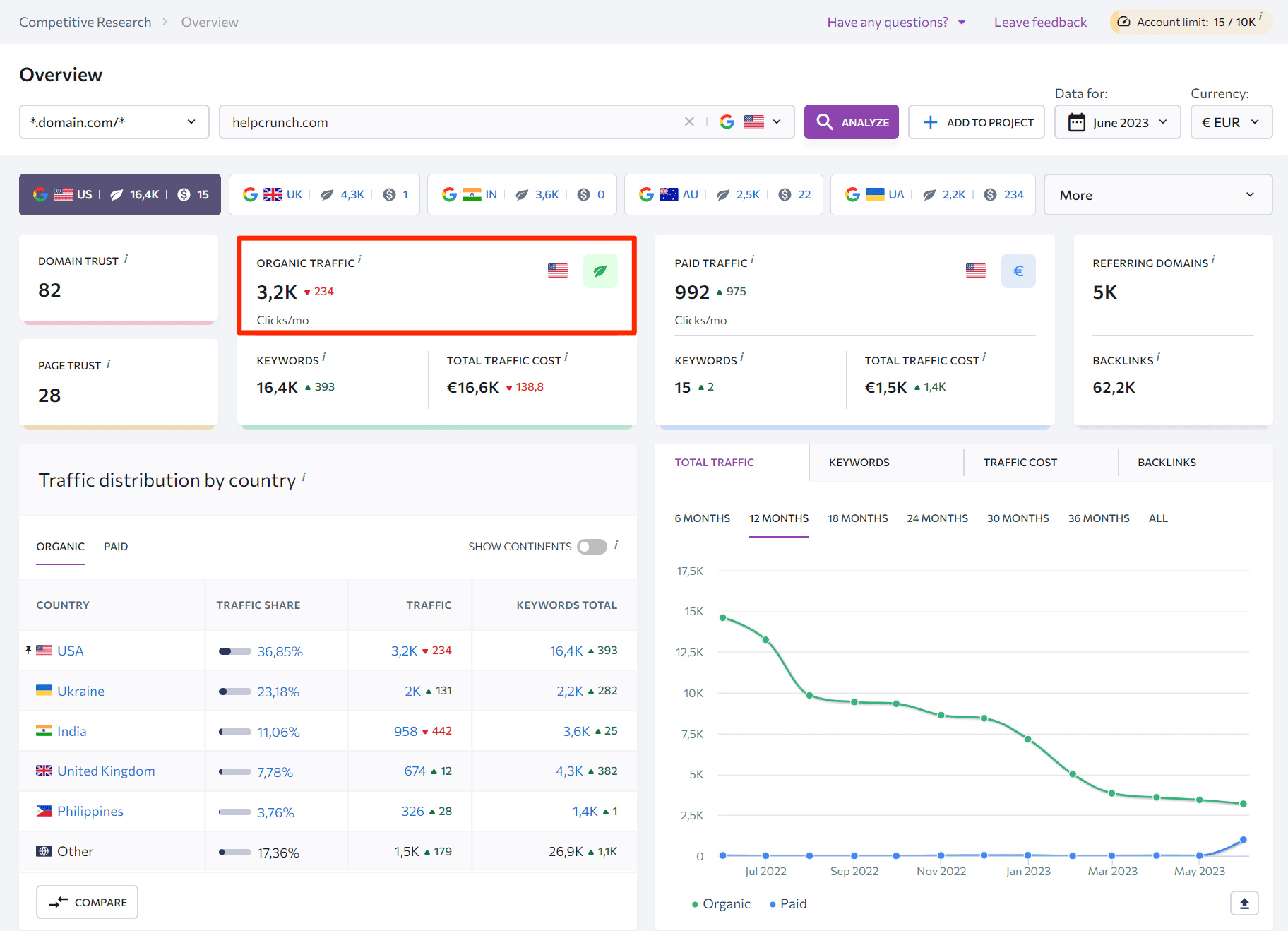
After our algorithm started to factor in more accurate search volume and CTR, the organic traffic value changed to 2.5K.
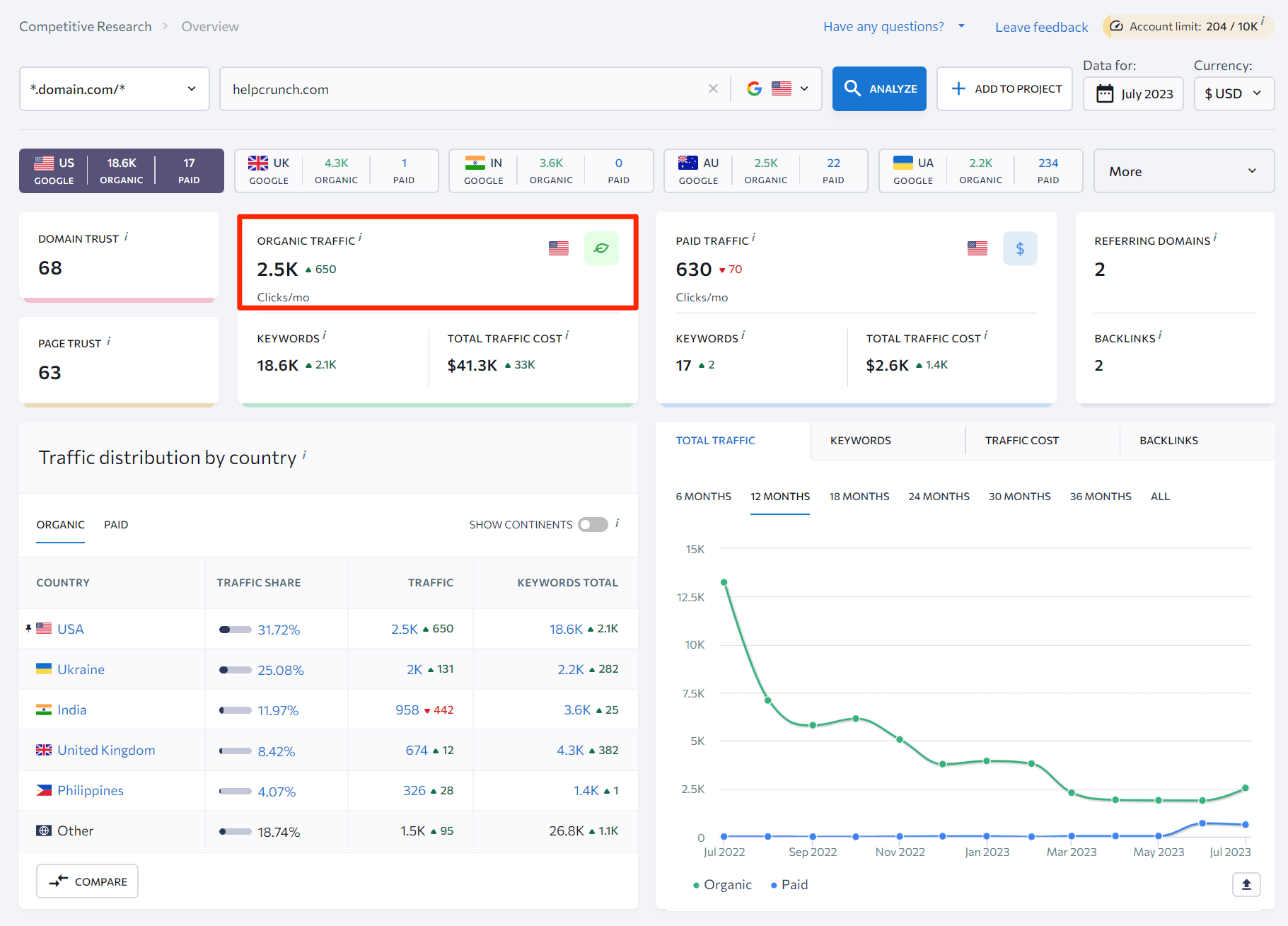
If we compare this estimation with the data from the connected GSC, we’ll see that they completely match.

Although we (yet) can’t guarantee a 100% match in all cases due to possible deviations from GSC data, our results for helpcrunch.com demonstrated a complete alignment. Previously, our variance from GSC data was 81.8%, but thanks to the new algorithm, we managed to reduce it by 23.7% to 58.1%.
The graphs below show how the deviation changed. The horizontal axis represents the percentage of deviation from the GSC data (0-30%, 30-60%, 60-90%, etc). The vertical axis shows the analyzed websites. As you can see, the number of cases where our data differs from the GSC by more than 100% has drastically decreased. In most cases, our traffic forecast has become closer to the GSC, as shown by the first three bars with a median deviation of 58.1%, marked with a red line in the second graph.
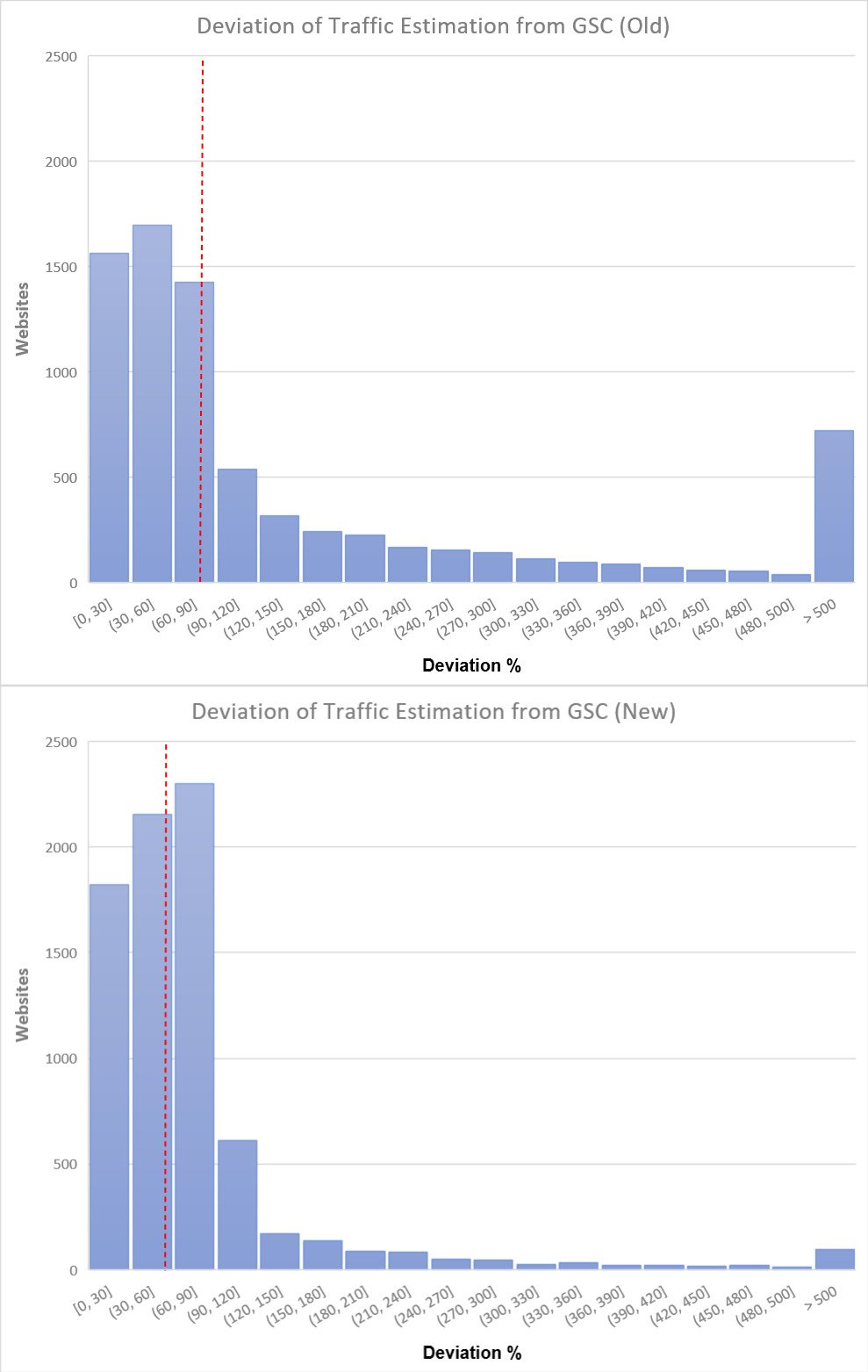
While a deviation of 58.1% may seem significant, it depends on the market niche and website type. For some cases, the deviation could be between 0 and 30%, as you can see in the first bar of the chart.
Additionally, it’s important to consider the differences in approaches. For instance, SEMrush deviates from GSC by 68.36%, while Ahrefs has a median deviation of 49.52%. However, Ahrefs experimented with a sample size of 1,635 websites, whereas SE Ranking analyzed data from a much larger sample of 7,675 sites.
This extensive dataset allows for a more accurate calculation of average deviation values, resulting in a more comprehensive assessment of organic traffic algorithm accuracy.
What does this mean for you?
The updated organic traffic estimation process will be carried out gradually. Recalculations require time, and since new data is opened for each database one by one, it’s important to understand how this rollout will impact you.
If you are in one of the updated zones, you may notice some fluctuations in the estimations as the algorithm adapts and recalculates. However, rest assured that this volatility will stabilize once the zone is fully updated. This phased approach ensures a smooth transition.
Now, let’s explore the benefits you can expect from this revolutionary update:
- Accurate insights for informed decision-making
With the enhanced formula, SE Ranking will provide precise and reliable data, enabling you to make data-driven decisions, allocate resources effectively, and optimize your SEO strategies with confidence.
- Better understanding of website performance
By gaining a comprehensive understanding of your website’s potential search traffic or that of your competitors, you can evaluate performance more accurately. You can also identify areas for improvement or gaps to capitalize on, or even align your SEO efforts to outperform your rivals.
- Improved budget allocation
By knowing the true potential of your organic traffic or that of your competitors, you can invest resources wisely.
- Upgraded keyword targeting
With SE Ranking’s new approach to organic traffic estimation and more accurate search volume values, you can identify high-value keywords and tailor your content and optimization strategies accordingly.
With the incorporation of machine learning techniques, SE Ranking’s algorithm has become adaptive and dynamic, ensuring that the data you receive is more precise and up-to-****. Now you’ll receive the most current insights to guide you in your SEO efforts.
P.S.
At SE Ranking, we believe the sky’s the limit when it comes to upgrading our tool and providing you with the best SEO insights on the market. The introduction of our new traffic and search volume forecasting formula is just the beginning of our journey to empower you with even more precise estimations.
Stay tuned as we continue to expand our formula and push the boundaries of SEO analysis. For instance, we’ll soon take into account not just the presence of SERP features but also their specific location on the page.
Exciting updates await you, so keep your eyes peeled!
